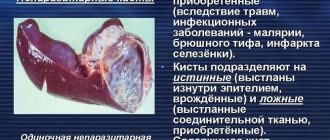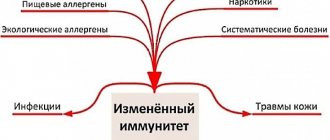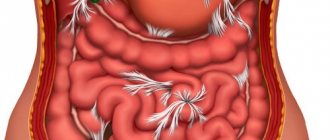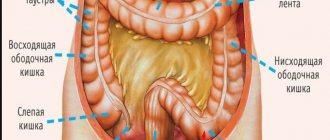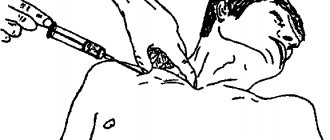Rhinitis - what is it? Classification and types of pathology, what causes inflammation, the mechanism of occurrence. Symptoms of rhinitis, danger and possible complications. Treatment methods: medications, surgery, folk remedies. Prevention of rhinitis.
According to statistics, the most common disease of the upper respiratory tract is rhinitis, popularly called the runny nose. If we say exactly what nasal rhinitis is, then it is not a separate disease, but a symptom of other diseases, most often of infectious origin, less often of allergic or non-infectious etiology. What is rhinitis in adults and children, types, causes, manifestations and how to treat it - this is what our article is about.
Rhinitis - what is it?
In medicine, the following definition is accepted: rhinitis is an inflammation of the nasal mucosa and sinuses, which causes disruption of its functions and is accompanied by watery, sometimes purulent discharge with bloody inclusions (snot). The inflammatory process is accompanied by other manifestations - swelling, difficulty in nasal breathing, itching and burning.
Regardless of the reasons for what doctors call rhinitis, the disease occurs because there are many small blood vessels in the tissues of the nasal sinuses. With inflammation, blood stagnates and the mucous membrane swells. The liquid component of the blood passes through the walls of the blood vessels - this is the secreted exudate, which we call snot. When the patient tries to get rid of the secretions, the blood vessels burst, blood appears in them, and in the advanced stage of rhinitis - pus. If the inflammation turns into rhinitis, the discharge becomes foul-smelling (ozena).
Diagnosis of a runny nose
To find out how to cure a runny nose in your particular case, you need to contact an otolaryngologist. The doctor will collect anamnesis, conduct an examination, make a diagnosis and prescribe the optimal treatment. The patient may be referred for the following diagnostic procedures:
- Blood and urine tests (general, biochemical) - to determine the nature of the disease.
- Rhinoscopy is an endoscopic examination of the nasal cavity.
- Allergy tests - if a runny nose is suspected of allergic origin.
In the presence of purulent inflammation, an X-ray examination or computed tomography of the nasal sinuses is prescribed. If the presence of malignant neoplasms is suspected, the patient is referred for histological examination of the nasal mucosa.
Kinds
The classification of rhinitis in medicine is very confusing; there is no single point of view yet. According to some opinions, there are several hundred subtypes of this pathology. The division into acute and chronic course is generally accepted, and 3 stages of the development of the disease are distinguished.
The most clearly recognized system is one in which rhinitis is divided according to the reasons that cause it. This classification identifies the following main types:
- infectious;
- traumatic;
- catarrhal;
- atrophic;
- vasomotor;
- allergic.
Each of them has its own subtypes and can occur in acute or chronic form, passing through three stages.
Acute rhinitis
The acute form in 99% of cases is of infectious origin - bacterial, viral, very rarely - fungal. The remaining percentage are manifestations of acute vasomotor rhinitis of allergic etiology.
Each of the 3 stages of acute rhinitis has its own characteristic manifestations.
- Stage I of the development of the inflammatory process begins with the appearance of a burning sensation and dryness in the nose, sneezing, a dull headache, and the temperature often rises to 37 degrees. This period is called the dry irritation stage.
- At stage II, serous-mucous watery discharge appears from the nose, the mucous membrane swells and turns red, a nasal voice is noted, and it is impossible to breathe through the nose. Severe headaches are localized in the center of the forehead and temples. The temperature rises to 38 degrees. This is the wet stage of serous discharge.
- Stage III of rhinitis (purulent) is accompanied by a decrease in all symptoms. The nasal discharge becomes thick, mucopurulent in nature (green snot), swelling and redness subside, the temperature returns to normal, and the headaches go away.
If rhinitis is left untreated, serious complications can occur. Adequate treatment in adults relieves acute inflammation on the third day, in children – on 4-5.
Acute rhinitis is considered a potentially dangerous respiratory tract disease. If a runny nose lasts more than 7 days without improvement, is accompanied by other unpleasant symptoms - pain in the ears, throat, cough, when the discharge becomes foul-smelling, and the temperature remains above 37.7 degrees - a visit or call to the doctor at home is required. The complications and consequences of rhinitis are dangerous and much more difficult to cure.
Chronic rhinitis
This is a protracted form of the inflammatory process; it occurs if acute rhinitis has not been treated or was incorrectly treated, as well as if complications arise. For persistent rhinitis, the symptoms are:
- runny nose lasts more than 3 weeks;
- no temperature;
- there is difficulty in nasal breathing, but not constantly, it intensifies on the street, in a hot room, with high humidity;
- often only one half of the nose is blocked;
- the discharge is mucous, moderate, and becomes purulent during exacerbation;
- the sense of smell is impaired;
- There is constant tingling, itching in the nose, crusts and boogers form.
Unlike the acute form, chronic inflammation of the mucous membrane can have not only an infectious origin, but also other causes:
- anatomical (defects and malformations of the structure of the nasal cavities) - a traumatic form of prolonged rhinitis;
- irritating factors of long-term exposure cause vasomotor and allergic rhinitis;
- local pathological processes in the nasal sinuses - catarrhal form;
- taking certain medications - medicinal hypertrophic chronic rhinitis;
- causes of the hormonal form of inflammation - malfunctions of the immune system, metabolic disorders, puberty, pregnancy, menopause;
- the atrophic form occurs as a result of atrophy of individual areas of the mucous membrane and nerve endings;
- neurovegetative rhinitis causes disruption of blood microcirculation and drying out of the mucous membrane; today this form is diagnosed in 21% of patients with a protracted course of the pathology.
Treatment methods for chronic rhinitis differ from each other and are aimed primarily at preventing complications.
Traumatic rhinitis
The causes of this type of nasal inflammation are not only injuries (blows, bruises), but also other mechanical influences: burns with steam, hot air and cold, entry into the nasal passages of particles of chemical and abrasive substances, foreign objects, rough manipulations, including medical . This type also includes congenital sinus defects.
Symptoms of the traumatic form of an acquired nature are as follows:
- irritation and burning in the nose;
- discomfort in the throat, hoarseness of the voice;
- sneezing, coughing;
- chills, headache, slight increase in temperature, weakness;
- inability to breathe through the nose;
- decreased or loss of sense of smell;
- copious watery discharge, turning into mucous, then purulent;
- the exudate is very caustic and irritates the mucous membrane;
- There are difficulties in treating rhinitis in adults and children.
Traumatic rhinitis has a longer course - 2-3 weeks or more, and is often complicated. In some cases, only surgery can help.
Catarrhal rhinitis
This form is also called the cold, although the cause may be a bacterial, viral or fungal infection. Its manifestations are the same as those of the acute form. One of the most striking signs is the complete inability to breathe through the nose, which is accompanied by night snoring, even in young children. The catarrhal form is always accompanied by a severe headache, serous discharge flows down the back wall of the throat and the patient is forced to swallow it. This leads to unpleasant belching.
Chronic catarrhal inflammation causes destructive changes in the nasal mucosa, and therefore requires special treatment for rhinitis in adults and children, which, in addition to the use of astringents, involves irrigation of the nose with saline solutions and physiotherapy - warming, UHF, ultraviolet irradiation.
Atrophic
The atrophic form (ozena) got its name due to the fact that inflammation is caused by atrophy of tissues and nerve endings in the nasal mucosa. This sluggish current disease is only chronic and is divided into primary and secondary forms.
Primary atrophy develops independently as a manifestation of the body’s autoimmune reactions, genetic factors and as a result of disturbances in the functions of endocrine organs. The cause may also be the incorrect structure of blood vessels, impaired blood circulation in the nose (atrophic vascular rhinitis). This form most often affects women and adolescents during hormonal surges (pregnancy, puberty, menopause).
The secondary form appears against the background of external influences - traumatic, environmental, infectious (after measles, rubella, scarlet fever, diphtheria, etc.). It could also be due to surgery in the nasal cavity. Iron deficiency anemia and vitamin D deficiency are also called influencing factors.
Doctors are inclined to believe that the atrophic form is caused by a specific pathogen, Klebsiella ozaenae - these bacteria are found in 80% of patients.
The symptoms are:
- constant nasal congestion;
- severe swelling of the nasal passages, noticeable even visually;
- feeling of tightness;
- little discharge;
- the formation of large hard crusts with a putrid odor and unpleasant color, their removal is painful, leads to injury to the mucous membrane and is accompanied by bleeding with blood;
- constant sensation of a foreign body in the nose.
The atrophic form of rhinitis is a complex disease, diagnosed using rhinoscopy and requires complex treatment:
- therapeutic procedures (moisturizing, cleansing);
- medicinal methods - angioprotectors, antibiotics, antibacterial drugs and immunostimulants, iron supplements;
- vitamin therapy;
- physiotherapy - inhalation and irrigation.
Infectious
Inflammation of an infectious nature in most cases occurs in an acute form. Caused by bacterial, viral and mycoinfection.
Classic symptoms:
- nasal congestion;
- a large amount of discharge;
- sneezing due to irritation of the mucous membrane;
- lack of smell;
- chills, fever (above 38 degrees);
- headache;
- stuffy ears;
- discomfort in the throat;
- cough;
- sometimes - intestinal manifestations.
The severity of the course and the clinical picture depend on the type of pathogen:
- inflammation of the nose due to the flu is accompanied by fever up to 40 degrees, general intoxication, muscle pain, aching joints;
- rhinovirus causes a mild course, mucus secretion is insignificant and passes quickly;
- adenoviral infection - the cause of a severe form, often complicated by conjunctivitis and otitis media;
- the fungal (mycotic) form is also complex in its course and, in addition to the main manifestations, is accompanied by the appearance of painful ulcers with uneven edges, pasty discharge with an unpleasant odor, pressure in the nose, the condition of the mucous membrane is very painful.
The danger of infectious inflammation is that the form of rhinitis can become protracted chronic, or cause severe complications.
Treatment of infectious rhinitis is complex: antipyretic and anti-inflammatory drugs are prescribed simultaneously with the use of vasoconstrictor drugs. Desensitizing therapy and distraction procedures are carried out. Acute rhinitis in children with severe cases requires the use of systemic antibiotics.
The danger of this form of rhinitis is not only in the large number of possible complications, but also in stimulating the exacerbation of other chronic diseases. It is dangerous for pregnant women, so rhinitis of a viral and bacterial nature must be treated under the guidance of an ENT doctor.
Vasomotor
This form is associated with disruptions in the regulation of the tone of the blood vessels of the nasal sinuses and mucous membranes. Vasomotor rhinitis is of two types:
- allergic (we’ll talk about it separately);
- neurovegetative.
In the first case, inflammation is caused by the presence of allergens. The causes of the neurovegetative form can be very different:
- vegetative-vascular dystonia;
- emotional stress or extreme physical activity;
- puberty, pregnancy, menopause;
- long-term use of nasal vasoconstrictor drops;
- treatment with anticonvulsants;
- adenoids in children;
- inflammation of the paranasal sinuses, sinusitis;
- pathological reflux (reflux of contents) from the stomach into the esophagus;
- use of household chemicals, smoking, perfumes, deodorants;
- drinking strong alcohol (reflex vasorinitis);
- syphilis;
- drug addiction, AIDS;
- cold – cold or pseudoallergic rhinitis.
Often it is not possible to identify one cause, then the diagnosis is: idiopathic rhinitis of unknown etiology.
According to the number of manifestations, the vasomotor form is divided into:
- intermittent rhinitis (infrequent attacks - 3-4 times a week);
- persistent (daily attacks).
The symptoms of vasomotor rhinitis are quite typical, but there are also features:
- difficult nasal breathing, often temporary, of a migratory nature - one-sided, depending on the position of the body;
- the amount of mucus is moderate, most of it flows down the back wall of the throat;
- pallor or cyanosis of the extremities;
- hypotension, low temperature, low pulse, headache;
- hypochondria, drowsiness.
The nasal mucosa is also bluish, with pinpoint hemorrhages, and the tissue is enlarged.
Attacks occur in direct proportion to the appearance of provoking factors after stressful situations.
With the medicinal form, the patient is forced to use vasoconstrictor drugs every few hours, otherwise nasal breathing is impossible.
The choice of therapy for the treatment of neurovegetative rhinitis depends on the causes that cause it. First of all, this is the elimination of provoking exogenous and endogenous factors, treatment of underlying diseases. Local H1 receptor blockers, mast cell membrane stabilizers, medications for secretions, physiotherapy, endovasal blockades with novocaine, local cauterization of the nasal mucosa are used. In difficult cases, more radical methods can be used: submucosal vasotomy, adenotomy, septoplasty, endoscopic correction.
Allergic rhinitis
The second most common type of inflammation of the nasal tissues, in all respects it is most similar to the cold form. But the reasons are not related to hypothermia, but to the presence of an allergenic provocateur in the nasal cavity. Almost any substance can be an allergen, but most often it is:
- house and street dust;
- pet fur, their smell;
- Poplar fluff;
- plant pollen;
- citrus aroma;
- tobacco smoke;
- traffic fumes;
- the smell of printing ink;
- alcohol;
- cosmetics, etc.
Characteristic manifestations of allergic rhinitis:
- nasal congestion;
- swelling and cyanosis of the nasal concha;
- switching to mouth breathing;
- constant itching;
- bouts of sneezing;
- clear discharge, most of which flows into the throat;
- impaired sense of smell and taste;
- tearfulness, pain in the eyes;
- tinnitus, hearing loss;
- snoring, snoring, nasal voice;
- dull pain in the frontal lobe;
- sleep disorders;
- dry cough;
- bleeding from the nose.
The allergic form is divided into types depending on the causes:
- seasonal rhinitis;
- year-round;
- professional.
The consequences and complications of allergic rhinitis can be very serious, including asthma and angioedema, so treatment must be carried out under the supervision of an allergist.
In children, untreated allergic rhinitis leads to the formation of a “Gothic palate,” malocclusion, weakening of the vocal cords, and even stuttering.
Treatment of rhinitis begins by eliminating contact with the allergen, then specific immunotherapy is carried out, and anti-inflammatory and antiallergic drugs are prescribed.
Pharyngitis, laryngitis
Despite the fact that these diseases are mainly viral in nature, a runny nose can also cause them. This happens especially often during the cold season.
Pharyngitis is localized in the pharynx and causes the following symptoms:
- Sore throat that gets worse with swallowing and coughing
- Soreness turning into cough;
- Fever.
Symptoms of laryngitis include:
- Dry cough alternating with wet cough
- Hoarse voice. Sometimes it may disappear;
- The throat itches from the inside.
If these diseases are caused by viruses, then the otolaryngologist prescribes antiviral drugs, and if they are caused by bacteria, antibiotics.
. They also prescribe cough medicines and recommend drinking more warm water.
Preventive measures are the same as for other complications. But, you need to pay more attention to the temperature and quality of the food. During the period of a runny nose, it is better not to eat too cold foods.
Causes
The most common causes of nasal rhinitis of infectious origin are:
- viruses;
- pathogenic microflora;
- decreased immunity;
- hypothermia and overheating of the body;
- too cold or hot air, high humidity.
Inflammation of the nose of non-infectious origin is caused by:
- allergy;
- contact with harmful substances;
- polluted air, hazardous working conditions;
- VSD;
- vascular pathologies and circulatory disorders;
- diseases of the endocrine system;
- neoplasms in the nose;
- diseases of the bronchi and lungs;
- burns, mechanical injuries;
- influence of medications;
- diseases of the oropharynx.
Tracheitis, bronchitis
Tracheitis is inflammation of the mucous membrane of the trachea, and bronchitis is inflammation of the bronchi.
The symptoms of these diseases will be difficult to ignore. For example, tracheitis is characterized by a dry cough, sore throat, chest pain, and high fever. And bronchitis is a wet cough with expectoration of sputum, sore throat, general weakness, and fatigue.
The causes of these diseases may be:
- Complication after rhinitis;
- Bad ecology;
- The air is too cold;
- Inhalation of harmful chemical fumes.
Treatment of tracheitis is simple. It is often carried out at home.
The doctor prescribes cough medicines, antibiotics or antiviral drugs, antipyretics, and expectorants. For bronchitis, bronchodilators are prescribed, which help increase the diameter of the bronchi. This way their patency is restored.
As for prevention, during the cold period it is necessary to exclude from the diet all foods that can irritate the mucous membrane of the trachea and bronchi.
Flu and rhinitis should also be treated in a timely manner to avoid complications. And, of course, strengthen the immune system.
With proper, and most importantly, timely treatment of a runny nose, complications will not arise. Therefore, you should not hope for luck, let everything take its course.
It is better to consult a doctor immediately. Share
Symptoms of rhinitis
As a rule, signs of acute rhinitis appear suddenly. The nature of the discharge at the first stage is liquid, but soon turns into mucus, then into pus with bloody inclusions. The remaining manifestations are the same for all types of nasal inflammation:
- swelling of tissues, this causes congestion;
- drying of the mucous membrane, itching, burning sensation;
- voice change;
- bouts of sneezing;
- headache;
- temperature fluctuations.
Each of the above types has its own specific manifestations depending on the stage of the pathology.
Complications
Most often, the organs located next to the nose are involved in the inflammatory process:
- paranasal sinuses (sinusitis, sinusitis, sinusitis);
- pharynx (pharyngitis);
- throat and tonsils (tonsillitis);
- larynx (laryngitis);
- trachea (tracheitis);
- bronchi and lungs (bronchitis, bronchopneumonia);
- ears (otitis, eustacheitis);
- lacrimal ducts (dacryocystitis);
- sinuses (polyps, cysts and other neoplasms);
- skin of the vestibule of the nose (dermatitis of the nasolabial fold and wings of the nose).
Among the rare consequences of nasal inflammation are hyposmia (loss of smell), malocclusion, and decreased tongue mobility. Myocarditis and other pathological changes in the heart are a consequence of insufficient nasal breathing.
Chronic rhinitis in pregnant women is the cause of hypoxia in the fetus and disturbances in its development.
Possible complications and consequences of the disease
Neglect of treatment leads to the following negative consequences:
- chronic oxygen starvation of the body;
- persistent headaches;
- surges in blood pressure;
- noise in the head;
- impaired coordination of movements;
- apnea (stopping breathing);
- persistent impairment of ventilation in the nasal sinuses;
- sinusitis or tonsillitis in chronic form;
- allergic rhinitis;
- rhinitis of non-allergic origin and eosinophilic syndrome;
- occupational rhinitis with loss of ability to work, including disability.
How to treat rhinitis with medications
Which doctor should I go to for treatment of rhinitis? The initial contact is to the local physician; if necessary, he gives a referral to an ENT specialist or an allergist.
Pharmacotherapy is prescribed depending on the type, stage of inflammation and prevailing symptoms. There is also a difference in how to treat rhinitis in adults and in children of different ages.
The list of drugs includes the following groups:
- systemic decongestants (pseudoephedrine, phenylephrine and phenylpropanolamine);
- local decongestants (all nasal drops and sprays, ointments);
- glucocorticoids for intranasal use;
- sympathomimetics;
- local M-anticholinergics;
- botulinum toxin A;
- nasal saline and antiseptic solutions for rinsing and irrigation;
- antipyretic, anti-inflammatory drugs;
- vitamins and immunostimulants.
If there is a risk of complications, antibiotics are prescribed. Homeopathic remedies, physiotherapy, and home methods (warming, inhalation, hot foot baths) are also used.
Dacryocystitis
When the mucous membrane of the nasolacrimal duct becomes inflamed, its patency is impaired. As a result, infection can enter the lacrimal sac and cause an abscess.
The main symptoms of dacryocystitis:
- Pain and swelling in the area of the lacrimal sac;
- Redness around the eyes
- Discharge of pus when pressing on the lacrimal sac;
- Deterioration of vision;
- Headache and fever.
If the case is not too severe, mild antibiotics are prescribed and it is recommended to use warm compresses on the lacrimal sac area.
. If the inflammation is severe, then antibiotics are prescribed intravenously. The abscess is also drained.
If the disease has reached a chronic stage, surgical intervention is necessary
. With the help of the operation, the nasal cavity is connected to the lacrimal sac by an additional channel.
Surgery
Surgery is used only in the treatment of chronic vasomotor inflammation, atrophic and hypertrophic forms. Basic rhinosurgical methods:
- vasotomy or conchotomy;
- endoscopy in the nasal cavity (removal of polyps and other tumors);
- galvanocaustics (cauterization);
- electrocoagulation;
- cryosurgery;
- laser surgery;
- shaver reduction;
- ultrasonic disintegration;
- denervation of blood vessels in the nasal mucosa;
- plastic surgery to eliminate defects of the nasal septum.
The most common operation is vasotomy. The intervention lasts no more than 10 minutes under local anesthesia. A scalpel, electric or radio knife is used. The surgeon dissects the vascular connections between the periosteum and the mucosa. This eliminates blood accumulation in the vessels, swelling subsides, and the nasal turbinates return to normal.
Endoscopy is used to remove polyps that occur with aggressive allergic rhinitis. The intervention is low-traumatic, bloodless, and is carried out under computer control.
Cauterization (galvanoacoustics) treats catarrhal hypertrophic rhinitis, which does not respond to conservative methods. In this case, the tissues are cauterized with a metal plate heated by electric current. The overgrown mucous membrane decreases, swelling subsides, and fluid circulation is restored. Nowadays this operation is used less and less, as it is very traumatic and painful in the postoperative period.
Cryosurgery (cauterization with liquid nitrogen) and laser removal of hypertrophied tissue are more effective. The big advantage of modern technologies is the absence of bleeding, sterility and a short rehabilitation period.
Forms of the disease
Chronic rhinitis can occur in the following forms:
- hypertrophic;
- atrophic;
- allergic (seasonal or year-round);
- non-allergic;
- professional;
- vasomotor.
Chronic allergic rhinitis is a high risk factor for the development of bronchial asthma.
In accordance with the generally accepted clinical classification, chronic rhinitis occurs in the following forms:
- catarrhal;
- hypertrophic;
- atrophic.
Classification of chronic rhinitis
Chronic hypertrophic rhinitis, in turn, is of two types:
- limited;
- diffuse.
Chronic atrophic rhinitis:
- simple;
- offensive runny nose (ozena).
Treatment of rhinitis in infants
Acute rhinitis in children under 2 years of age should be treated only under the supervision of a pediatrician according to the following scheme:
- before each feeding, it is necessary to clean the nasal passages in order to restore nasal breathing, for which the mucus is sucked out with a special balloon;
- the crusts must be softened with olive oil and removed with a cotton swab;
- 5 minutes before feeding, drops should be instilled into each nostril to make breathing easier: Sanorin emulsion 0.1% or Otrivin solution 0.25%;
- 2 hours after feeding, instill 3 drops of Protargol or Collargol 2% solution.
Other medications and procedures are prescribed by a pediatrician.
Mechanism of rhinitis development
Rhinitis is the body’s natural defense reaction to an infectious, allergic or other attack through the nose. With an increased intake of provocateurs, an increase in serous effusion begins to remove the pathogen and the products of its influence. Immediately, the blood vessels begin to dilate, which supply white blood cells to fight the infection.
Leukocytes and pathogenic microorganisms destroyed by them are added to the secreted exudate, and the mucous membrane swells even more, and hyperemia appears. The proportion of mucus in the secretions increases, the mucous glands expand, and the lumens of the cavernous bodies fill with blood. Due to desquamation of the epithelial layer, pinpoint hemorrhages appear. At this stage of the development of nasal inflammation, erosions of the mucous membrane appear, exudate accumulates in the epithelial blisters. When they break through, bacterial infection of the tissue occurs.
The mechanism of development of allergic rhinitis is slightly different. The initial factor is individual sensitivity to exogenous stimuli. Cellular receptors interact with them and release histamine, which causes an inflammatory reaction in the mucosa.
Treatment of the disease with traditional methods
Traditional medicine offers many remedies for the common cold, some of them are very effective and are recognized by official medicine.
- Aloe, colanchoe, beet, carrot, birch juice, menthol oil should be instilled 2-3 drops into each nostril 3-4 times a day.
- An ointment made from Vaseline and crushed walnut leaves helps.
- Rinse the nose with the following solution: for 1 glass of water, 1 tsp. salt and 3 drops of iodine.
- Rinse the nose with a 1:1 solution of honey.
- Inhalation with fir oil.
- A decoction of marshmallow and eucalyptus leaves for rinsing 5-6 times a day.
- Flatbreads made from honey and flour for heating.
- Acupressure of the bridge of the nose and wings of the nose.
- Breathing exercises.
Prevention
Measures to prevent the development of rhinitis are simple but effective:
- strengthening the immune system, preventing colds, flu vaccination;
- correction of hormonal disorders;
- ventilation of premises, normalization of humidity, cleanliness;
- refusal of household chemicals and fragrances;
- exclusion of harmful influences and allergens;
- hardening;
- timely treatment of pathologies of ENT organs.
At the first manifestations of rhinitis, contact a medical facility - this will help alleviate the course of the disease and protect against complications.
Preventive actions
It will be possible to reduce the risk of recurrent rhinitis by devoting time to prevention and strengthening the body. It is necessary to exclude all factors that provoke the disease. Exercising, proper nutrition, and regular wet cleaning of the room have a positive effect on both the healing process and future life.
Rhinitis is a common disease that responds well to treatment. However, some people do not consider the pathology to be serious, so they refuse treatment. The disease gradually progresses and causes complications. You can get rid of the problem with the help of medications or modern painless methods.

